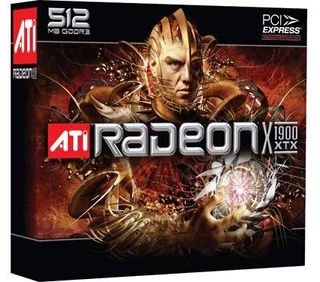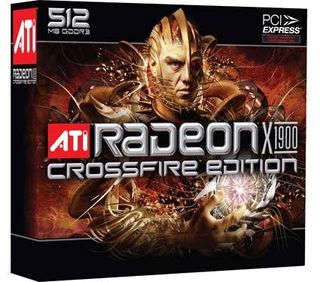ATI's Radeon X1900 Heats Up With 48 Shader Units
Today's Program Is Brought To You By The Letter X

Instead of launching one or two high-end cards, ATI continues their new tradition of debuting an entire family. However, unlike having three levels of design like X1800 (R520), X1600 (R530), and X1300 (R515), ATI chose to launch one chip with four designs; the two high end cards, the Crossfire Master card, and the All-In-Wonder X1900 cards. This approach is very simplistic compared to the 11 different configurations of its last series launch. However it really should stick to one naming convention. Both companies have so many SKUs (Stock-Keeping Unit) for their myriad of goods that it has gotten a bit confusing. Okay, a lot more confusing.
For ATI, the top card once was the Pro model as in 9800 Pro. Then it was changed to the XT. Then the limited edition XT's were the XT PE or Platinum Edition. Now we have the XTX as the top dog. What is next, an XTX PE for a limited edition variant? Even mainstream cards are crazy, like the GT, GTO, and GTO2. Within the classification of GTO there are more than three different cores and it only adds to the confusion level. NVIDIA isn't out of this mess either with the LE, GT, XT, Ultra, GS, GTX, and GTX 512.
When ATI had the 9800 Pro 128 and 256, the 256 designated memory densities only. That is not the case with the GeForce 7800 GTX and GeForce 7800 GTX 512 - they have different cores and memory densities. Obviously, the marketing departments at both companies are obsessed with the letters G, T, and X. It seems that that graphics industry continues mimicking the automotive industry for their naming schemes. I hear that the letters R, S, and Z are available...

Stay on the Cutting Edge
Join the experts who read Tom's Hardware for the inside track on enthusiast PC tech news — and have for over 25 years. We'll send breaking news and in-depth reviews of CPUs, GPUs, AI, maker hardware and more straight to your inbox.
Current page: Today's Program Is Brought To You By The Letter X
Prev Page The Rat Race, Continued Next Page Meet The Pair-entsMost Popular

